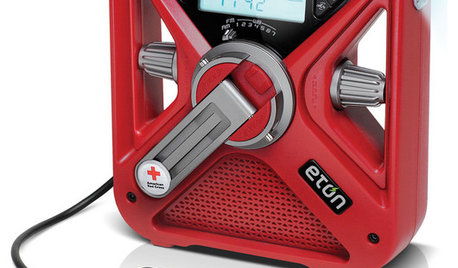Huskee w/ B&S 12hp runs then dies
kssue
14 years ago
Related Stories

TRAVEL BY DESIGNShould You Open a Bed-and-Breakfast?
Before you commit to innkeeper dreams in your home or an existing B and B, here's what you need to know
Full Story
DECORATING GUIDESPop Culture Watch: 12 Home Trends from the '80s Are Back
Hold on to your hat (over your humongous hair); interior design elements of the 1980s have shot forward to today, in updated fashion
Full Story
FEEL-GOOD HOME12 Very Useful Things I've Learned From Designers
These simple ideas can make life at home more efficient and enjoyable
Full Story
KITCHEN DESIGN12 Ideas for a Knockout Kitchen
Give your cooking space sizzle with color, pattern and materials used in unexpected ways
Full Story
INSIDE HOUZZTell Us Your Houzz Success Story
Have you used the site to connect with professionals, browse photos and more to make your project run smoother? We want to hear your story
Full Story
HOME TECH7 Ways to Charge Up and Connect After Disaster
Products and tips for communicating and keeping essential items running till the power's back on
Full Story
WOODTry DIY Plywood Flooring for High Gloss, Low Cost
Yup, you heard right. Laid down and shined up, plywood can run with the big flooring boys at an affordable price
Full Story
LIFE12 House-Hunting Tips to Help You Make the Right Choice
Stay organized and focused on your quest for a new home, to make the search easier and avoid surprises later
Full Story
ENTERTAININGHome Bars Tap Into Guy-Friendly Style
Belly up to rich wood, sports memorabilia and plenty of beer — pub spaces are letting guys run wild without leaving home
Full Story
BATHROOM WORKBOOK12 Ways to Get a Luxe Bathroom Look for Less
Your budget bathroom can have a high-end feel with the right tile, stone, vanity and accessories
Full StoryMore Discussions



rcbe
walt2002
Related Discussions
12HP Briggs & Stratton carb mounting bolts won't stay put
Q
tsc huskee 12/39 electrical/engine question
Q
Old Briggs 12 hp, sell or chunk?
Q
55lbs Compression Okay For A L-Head B&S
Q
mownie
kssueOriginal Author
mownie
kssueOriginal Author
mownie
kssueOriginal Author
kssueOriginal Author
kssueOriginal Author
mownie
kssueOriginal Author
njdpo
mownie
kssueOriginal Author
rcbe
kssueOriginal Author
mownie
mownie
rcbe
kssueOriginal Author
mownie
kssueOriginal Author